Axe [ono]
Oni
Oni
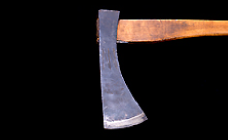
The narrow and narrow "Ono" with a blade width is called Axe, and the "Ono" with a wide blade width and one side constricted is called axe. Axe is broadly divided into cutting axe and split Axe. A cut ax is a tool for cutting and cutting wood in the horizontal direction, with a thin blade and easy to penetrate into the tree. Wari Axe is a tool for breaking wood vertically, with a thick blade and a wedge-like shape. Both cut axes and split Axe are used mainly for soma work. The small Axe with a short pattern is called Kowari Axe and is used to make the wood smaller.
The blade of Axe is a double blade. There are three types of cheeks in the cut ax (hole for inserting patterns): a rectangular liner, a trapezoidal Shinshu sheep, and an oval round sheep, and the preferred shape of sheep varies depending on the region. The figure below is called Kishu-type, Shinshu-type, and Tosa-type from the right, and is used in the surrounding area (Fig. 1). Axe is sometimes called "yoki" or "seba" depending on the region.
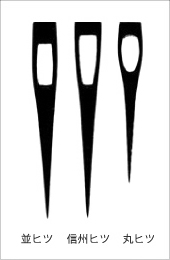
Figure 1 Difference between sheep
The axe is mainly used to scrap the side of the lumber (cut off) and finish it into square wood. There are large ones with long patterns and small ones with short patterns, and the latter is called a carpenter axe. Large axes are mainly used for soma work, and carpenter axes are used for rough work of carpenters and for making wedges by breaking the tip of a tree.
The axes are traditionally preferred for different regions of use (Fig. 2). In the past, the shape was made in each area used, but now the shape divided by the blade production area is shipped to each area. The axe has both blades like the Axe, but the Tosa Daiaxe is one blade, and the right and left are two blades. The axe is also called "Hatsuri", "Hatsuriyoki", and "Habiro" depending on the region.
Lines are sometimes engraved on the back and forth of the blades of the Axe and the axe, but it is said that the sign of tiger repellent means sake and five grains and means the feeling of prayer to God.
Axe and axes are tools used by swinging down using their own weight, so their size is indicated by weight, not blade width. The pattern is mainly made of hard and sticky oak.
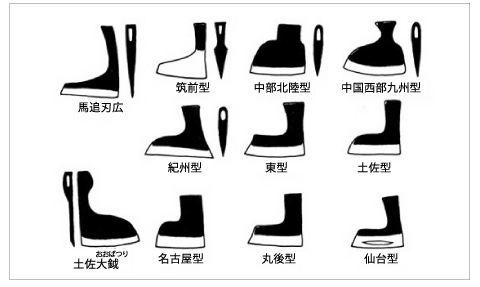
Figure 2 Axis Type
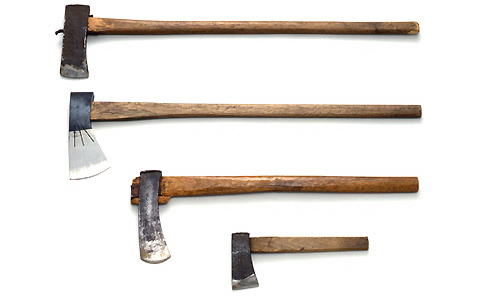
Various Axe Axe, Cut Axe, Cut Axe, Kowari Axe
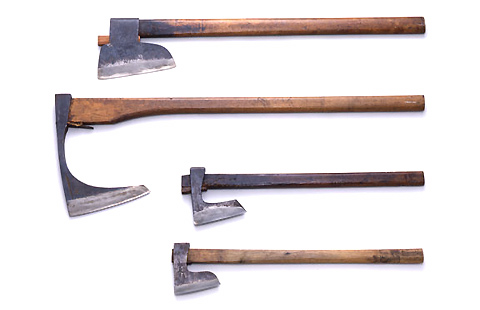
Various upper two axes and lower two axes carpentry axes
Basic information
Special Exhibition
Permanent exhibition